Extra information and videos
In this information leaflet, you will find QR codes for some topics that link to extra information and videos on the website www.gegevensverbeterenlevens.nl (in Dutch).
You can also scan the QR code below with your phone or tablet to visit the website.
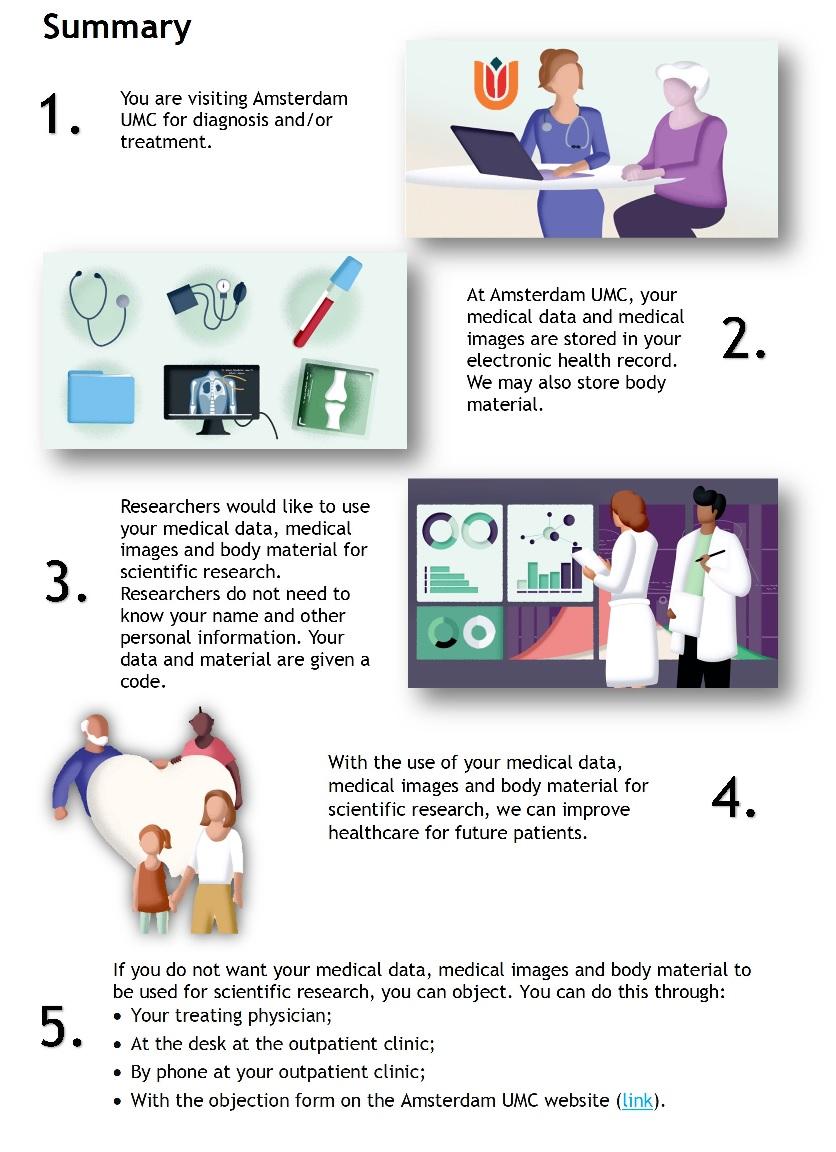
What are medical data?
Medical data are all the information about you that is stored in your electronic medical record at Amsterdam UMC.
Examples of medical data include:
- Data about yourself: gender, age, height, weight.
- Data about your condition/disease: diagnosis, symptoms.
- Data about your treatment: surgery, medications, side effects.
What are medical images?
Medical images are the images taken during, for example, an ultrasound, X-ray, CT scan or MRI scan. These images are also stored in your electronic medical record at Amsterdam UMC.
What is body material?
Body material is, for example, blood, urine or tissue.
Tissue is the bodily sample that the doctor or nurse took from you during a puncture, biopsy or surgery.
During a puncture, fluid or cells are taken with a needle. A biopsy involves removing a small piece of tissue. During an operation, usually a larger part of tissue is removed.
After a procedure, leftover body material is kept in case it is needed later for your diagnosis or treatment.
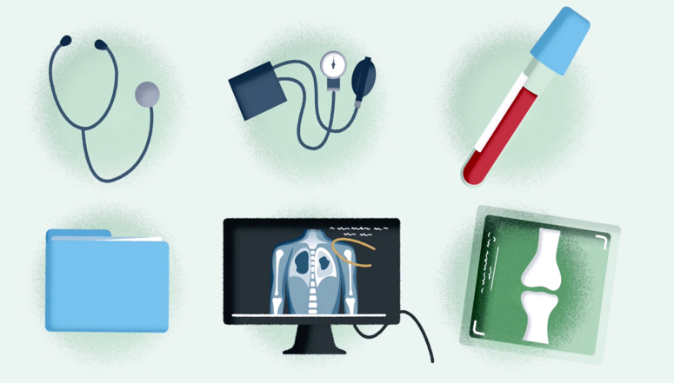
What does Amsterdam UMC do with your medical data, medical images and body material?
With your medical data, images, and body material, we can do scientific research. We do this to better understand diseases, prevent them more often and develop better treatments.
We use only the medical data, images and body material that are already available from your diagnosis and/or treatment. Without your permission, no extra data or materials are collected than already collected for your diagnosis or treatment. If other data is needed to answer a specific scientific question, this will first be explained to you. You will then be asked to give specific consent.
Amsterdam UMC conducts scientific research with the medical data, images and body material in different ways.
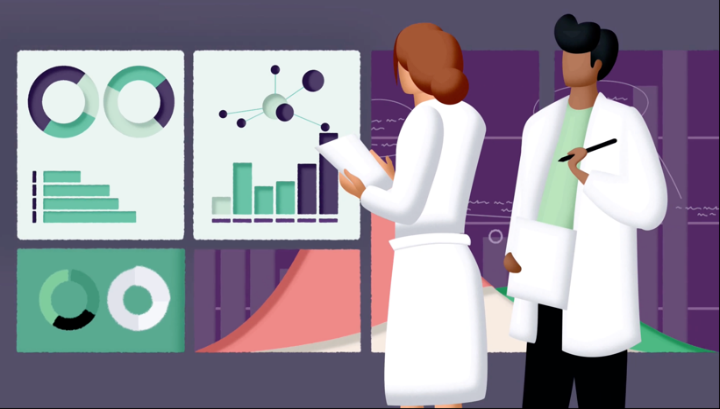
- Example: in cancer patients we study whether changes in blood values during treatment can predict which treatment best suits a patient. This prevents patients from continuing too long with a treatment that turns out to be ineffective.
What rules apply to scientific research with medical data, medical images and body material?
Laws about healthcare providers' professional secrecy and patient privacy (GDPR) apply to the use of medical data, images, and body material. We also follow agreements made between doctors, researchers, and patient associations. The main rules are:
-
- The research must be useful for the disease for which you are visiting the hospital or a condition related to it;
- Your privacy must be adequately protected (refer to the next page);
- There is a committee overseeing research involving medical data, images and/or body material.
- Researchers may only use your medical data, images and materials if it is strictly necessary to carry out a scientific study.
|
How do we protect your privacy?
|
Research with other universities or companies
Scientific research often requires medical data, medical images and/or body material from many patients. That is why we often work with other researchers from the Netherlands or abroad. This collaboration allows us to learn from each other and improve our research.
Sometimes we work with companies if this helps Amsterdam UMC’s research and is useful for patients. For example, if a company wants to develop a new diagnostic test or treatment.
When collaborating with researchers outside Amsterdam UMC and companies, we always make agreements that are set out in a contract. Amsterdam UMC always remains involved in the research and co-responsible for the proper use of your medical data and body material.
Your medical data and body material are never sold. We do not make a profit from the scientific research we conduct with your medical data, medical images and/or body material. Sometimes we do receive compensation for conducting research.
No feedback on research results
We will not personally inform you about the studies for which your data, medical images and/or body material will be used. You cannot indicate for which studies your medical data, images and body material may be used and for which research this is not allowed.
In exceptional situations, a researcher may discover something relevant to your health. This is reported by the researcher to the committee that supervises the scientific research. The committee will determine whether it is necessary to break the code to inform you about the finding through your doctor or general practitioner.
How to object?
If you do not want your medical data, images and/or body material to be used for scientific research, you can object to this. Your objection is recorded in your electronic health record. Amsterdam UMC is then not allowed to use your data and materials for scientific research.
You do not need to give a reason why you are objecting. Objecting has no consequences for your care. You will receive exactly the same care from your doctor as when you do not object.
Your objection is valid for as long as you want. As long as you do nothing, the objection remains valid. Your objection also applies to your medical data, images, and body material that we keep from you in the future and after your death.
You can object in different ways, in writing or verbally:
- Through your treating doctor,
- Through the outpatient clinic staff at the desk,
- By phone through your outpatient clinic,
- Through the objection form on the Amsterdam UMC website (link). You can return this or hand it in to the desk staff at the outpatient clinic. You can also open the objection form by scanning the QR code with your mobile phone or tablet.
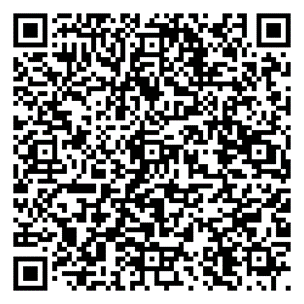
If you do not object, your medical data, images, and/or body material may be used for scientific research. This also has no consequences for the care you receive at Amsterdam UMC.
Want to know more?
On the website www.gegevensverbeterenlevens.nl you can find more information about the use of medical data, images and body material for scientific research (in Dutch). This website was commissioned by the Ministry of Public Health, Welfare and Sport (VWS) and applies to all patients in the Netherlands.
Patients who cannot or should not decide for themselves
Are you a legal representative or the parent of a child under 16? Or are you the legal representative of a patient who lacks capacity? Then you decide for this person. You can object to the reuse of this patient’s medical data, medical images, and body material for scientific research.
Children between the ages of 12 and 16 may also decide for themselves. If the child or one of the parents objects, this is noted in the child's record. If an objection is registered from the child (older than 12 years) or from one of the parents, medical data, images, and body material will not be used for scientific research.
Do you have a complaint?
If you are dissatisfied with how we handle your data, you can always contact your treating doctor. If you prefer not to, you can contact Patient Service Healthcare Support (PAZO):
Location VUmc, first floor of the outpatient clinic, PK 0 Hall 08
Telephone number: 020-444 07 00
Email address:
PAZO-VUmc@amsterdamumc.nl
Location AMC: hallway of outpatient
clinic, A0-406
Telephone number: 020-566 33 55
Email address:
PAZO-AMC@amsterdamumc.nl
You can also contact the Dutch Data Protection Authority (Autoriteit Persoonsgegevens):
Website: www.autoriteitpersoonsgegevens.nl

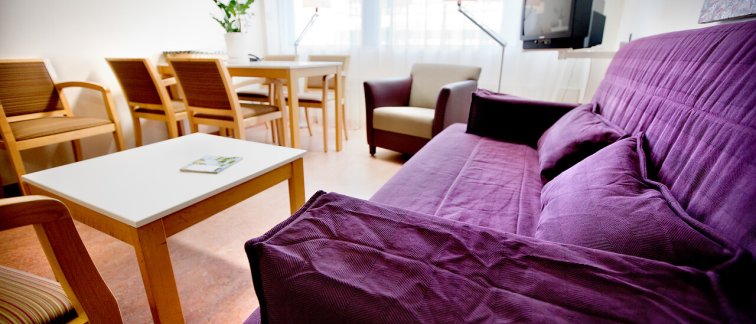
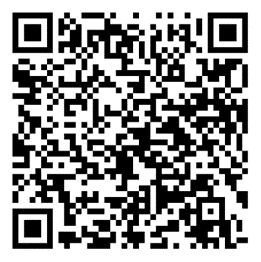 Researchers do not need to know who you are to conduct research on your data. Therefore, data, images and body material are first coded before they are used.
Researchers do not need to know who you are to conduct research on your data. Therefore, data, images and body material are first coded before they are used.